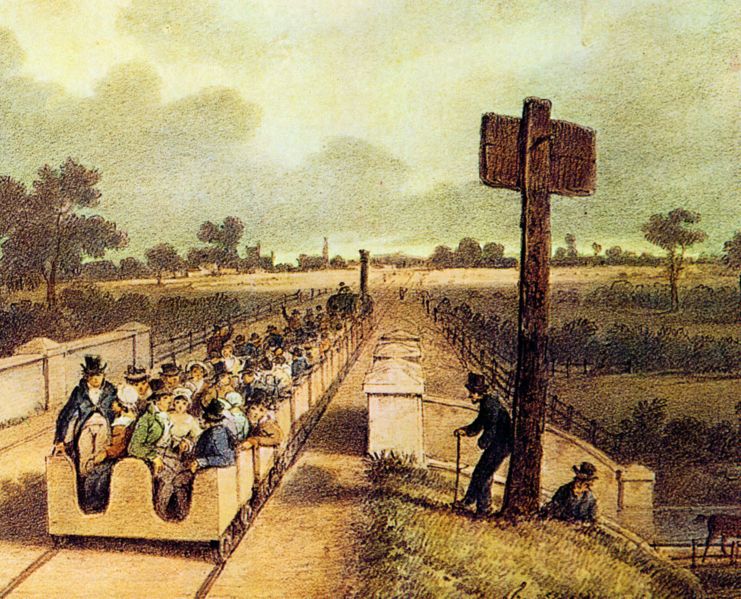
AsianOverland.net
Tour Guide - Itinerary
Asian Overland Sydney to London
Started 22/06/2022 Finished 21/06/2023365 Days ITINERARY
Day 172 date 10/12/2022AYRSHIRE, SCOTLAND to LIVERPOOL, ENGLAND
ASIANOVERLAND.NET SYDNEY TO LONDON DAY 172: AYRSHIRE, SCOTLAND TO LIVERPOOL, ENGLAND
By the start of the 19th century, a large volume of trade was passing through Liverpool, and the construction of major buildings reflected trading wealth. In 1830, Liverpool and Manchester became the first cities to have an intercity rail link, the Liverpool and Manchester Railway. Liverpool’s population increased rapidly, especially during the 1840s when Irish migrants began arriving by the hundreds of thousands as a result of the Great Famine.
Britain was a major market for cotton imported from the Deep South of the United States, which fed the textile industry. Given the crucial role cotton played in Liverpool's economy, during the American Civil War, Liverpool was described as "the most pro-Confederate place in the world outside the Confederacy itself."
During the 19th century, the wealth of Liverpool exceeded that of London, and Liverpool's Custom House was the single largest contributor to the British Exchequer.
In the early 19th century, Liverpool played a major role in the Antarctic sealing industry, and Liverpool Beach in the South Shetland Islands is named after the city.
In 1851 Liverpool was described as "the New York of Europe", and during the late 19th and early 20th centuries, Liverpool attracted immigrants from across Europe. This resulted in the construction of a diverse array of religious buildings for the new ethnic and religious groups, many still in use today. The Deutsche Kirche Liverpool, Greek Orthodox Church of St Nicholas, Gustav Adolf Church and Princes Road Synagogue were all established in the 1800s to serve Liverpool's growing German, Greek, Nordic and Jewish communities. One of Liverpool's oldest surviving churches, St. Peter's Roman Catholic Church, served the Polish community in its final years as a place of worship.
Liverpool’s growth as a major port led to the expansion of the city throughout the Industrial Revolution. Along with general cargo, freight, and raw materials including coal and cotton, merchants were involved in the slave trade. In the 19th century, Liverpool was a major port of departure for English, Scottish and Irish emigrants to North America and Australia. It was also home to the Cunard and White Star Lines, and was the port of registry of the ocean liners RMS Titanic, RMS Lusitania, RMS Queen Mary, RMS Queen Elizabeth and RMS Olympic. The most famous ship to sail from Liverpool was the ill-fated Titanic, which struck an iceberg and sunk in the Atlantic on its maiden voyage in 1912, with the loss of 1517 lives.
Liverpool is also well known for its music. An obscure long-haired local band called The Beatles faired rather better than the Titanic, and inspired a generation of long-haired hippies who followed The Beatles rather than Jesus Christ.
The Highland Clearances were the evictions of Scottish clans from the Scottish Highlands and Islands, mostly from 1750 to 1860. For many Scots, the nightmare which began with eviction from their ancestral lands, had only just begun. One example of these emigration voyages was the 'Ticonderoga' Migrant clipper, which departed from Liverpool on 4 August, 1852 with 795 emigrants and 57 crew.
After a hellish voyage with typhus and other contagious diseases rampant onboard, the “Hell Ship” entered the colony of Victoria at Port Phillip Heads on 3 November, 1852, with 104 dead, mostly from typhus. The 'Ticonderoga' landed at a non-existent Point Nepean “Quarantine Station” on 4 November, 1852, where quarantine tents and facilities were hastily erected to accommodate the newly quarantined Scot and Irish arrivals.
The disinfected 'Ticonderoga' finally departed for Melbourne on 22 December, 1852, after another 76 passengers had died, a total of 180 or 25% of the passengers who boarded at Liverpool;
“We two have paddled in the stream,
from morning sun till dine;
But seas between us broad have roared
since auld lang syne.”
The surviving passengers, crew and their descendants (mainly Scots and Irish), settled in the colony of Victoria during the Victorian gold rush, when it was in desperate need of able-bodied people.
The net result is that ten pounds was the price England paid to clear the Scots from Scottish Highlands, and ship them off from Liverpool to Australia. It would have been difficult for the Scots to imagine that the fate which awaited them at sea after departing from Liverpool, could be worse than their removal from their ancestral homes.
It’s a long way back to Scotland. It’s an equally long way back from Scotland to Australia. Although many British emigrants and ancestors have sailed from Liverpool to Australia, including “Ten Pound Poms”, we aren’t tempted to repeat the sea voyage, and prefer the overland route to and from Australia.
© This work is copyright. Apart from any use permitted under the Copyright Act 1968, no part may be reproduced by any process, nor may any other exclusive right be exercised, without the permission of Peter Searle, peter@portseavillageresort.com; 1980-2024.
Website built by Justin O’Dea www.webdeveloperdocklands.com.au


